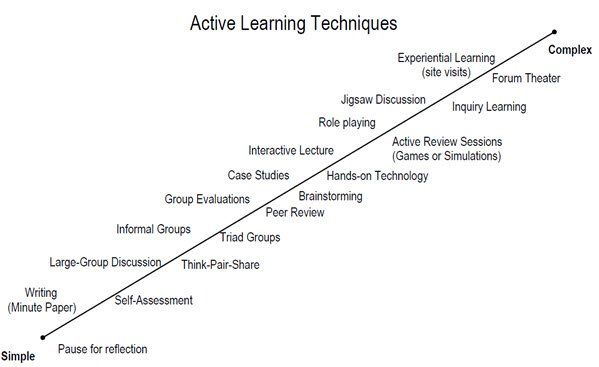TA Training - STA199
Active Learning + Interacting with Students
Eli Gnesin
Duke University
2024-01-12
Introductions
Outline
– Teaching
--- Active Learning
--- Interacting with Students – Quarto
--- How we Teach Quarto in 199
--- Common Student MistakesDuring the workshop
This is a space to talk and think critically about teaching
– Breakout rooms
– Group discussions
– Activities
TAs Matter
“Several of the factors that contribute to STEM retention relate to how faculty teach and the messages they send. Notably, more than 90% of students who left STEM majors mentioned concern about the poor quality of teaching in their introductory college courses” (Seymour and Hewitt 1997)
TAs Matter
“Several of the factors that contribute to STEM retention relate to how faculty teach and the messages they send. Notably, more than 90% of students who left STEM majors mentioned concern about the poor quality of teaching in their introductory college courses” (Seymour and Hewitt 1997)
How to send the right message
What message do we want to send?
What are some strategies we can use to send the right message?
Message: We care & want them to be successful
Be on time (lab + office hours)
Communicate with your students
Be approachable
Approachability
Breakout Room (~5 minutes)
Recall an instructor who you felt comfortable approaching during lab/office hours and one who you did not. Why were you comfortable approaching the one teacher, but not the other?
Discussion
Approachability (Key Take-Aways)
How and what we communicate verbally and non-verbally matter!
It’s not only what you say, but also how you communicate it
Difficult situations will arise when interacting with students.
– How we respond verbally and non-verbally matters!
– Instructors will handle different situations differently
– Be flexible and adapt to the situation and context you encounter.
Other practical 199 tips
– Support each other & the instructor
– Do not promise points to students
– Follow up with students
TAs Matter
“Several of the factors that contribute to STEM retention relate to how faculty teach and the messages they send. Notably, more than 90% of students who left STEM majors mentioned concern about the poor quality of teaching in their introductory college courses” (Seymour and Hewitt 1997)
TAs are Teachers
You are not just an answer key…
– You teach students during lab
– You teach students during office hours
– … and how you teach matters!
How you teach matters
Students being taught using passive lecture techniques report general dissatisfaction with the overall learning environment, lack of structure, and impersonal nature of their courses (Cooper and Robinson 2000)
Active Learning
“Several national reports have called for universities to move away from lecture and incorporate active learning into undergraduate STEM courses” (Advancement of Science et al. 2011; Olson and Riordan 2012)
What is active learning?
Active Learning
My definition: Discovery based learning where the instructor uses sets of techniques that involve students in the learning process.
Where the learning process is a shared responsibility between the instructor and student.
– Any technique that actively engages students in the material
“Active learning, in contrast, is grounded in constructivist theory, which holds that humans learn by actively using new information and experiences to modify their existing models of how the world works” (Theobald et al. 2020)
National Recommendations
Guidelines for Assessment and Instruction in Statistics Education
Use active learning
– Teach statistics as an investigative process of problem-solving and decision making.
– Give students experience with multivariable thinking.
– Focus on conceptual understanding.
More reasons to care
Setting students up for future academic success
– Increased assessment scores; decreased failure rates (Freeman et al. 2014)
– Improved critical thinking skills (Nelson and Crow 2014)
– Problem solving skills (Gleason et al. 2011)
What does this look like?

Prepared by Chris O’Neal and Tershia Pinder-Grover, Center for Research on Learning and Teaching, University of Michigan
In Lab & Office Hours
How could active learning be incorporated?
Answering questions with questions
Allow for mistakes
Help students discover material
Facilitating group conversation
Assigning roles to students in groups
Key Take-Aways
– Active learning looks different in different classrooms and for different instructors … and that’s okay!
– Adapt active learning to fit who you are as an instructor!
Key Take-Aways
Implementation Matters!
– Using a particular strategy does not guarantee students are actively engaged in the material … it’s more about how you use a strategy than what the strategy is itself.
Key Take-Aways
Transparency is key!
– Students are more likely to “buy-in” when they understand why you are using some of the strategies you are
Research Based Recommendations
Make time for teaching
– Habitual reflection and self-evaluation
– Classroom observations
– Formal interactions (discuss teaching in weekly meetings)
– Informal interactions (discuss teaching with each other)
Resources
– Your instructor
– Other instructors